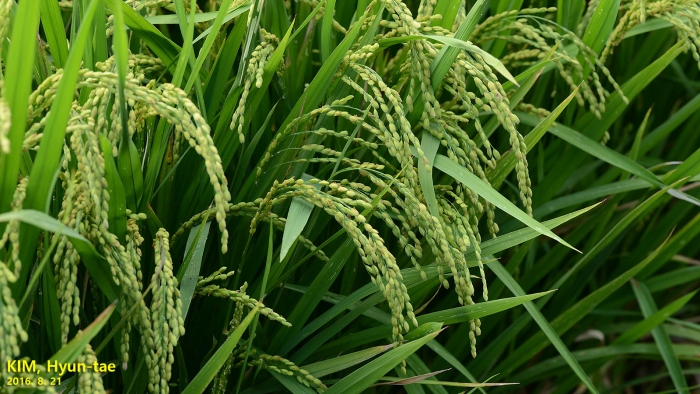Asian Rice
(Oryza sativa)
Asian Rice (Oryza sativa)
/
/

© Kim, Hyun-tae
CC BY 4.0

























































Estimated Native Range
Summary
Asian Rice is valued for its adaptability to various water regimes and soil types, making it a cornerstone of global agriculture. It is cultivated in flooded fields called paddies to control weeds and pests, which also facilitates easier harvesting. The plant’s ability to thrive in standing water is unique among cereal crops. In terms of cultivation, it requires full sun and a consistent supply of water, either through natural flooding or irrigation. It is not typically grown for ornamental purposes but is crucial for food security. Oryza sativa can become invasive outside its native range due to its robust growth and ability to outcompete native vegetation in wetland habitats.CC BY-SA 4.0
Plant Description
- Plant Type: Grass
- Height: 1.5-2.5 feet
- Width: 1.5-2.5 feet
- Growth Rate: Rapid
- Flower Color: N/A
- Flowering Season: Summer
- Leaf Retention:
Growth Requirements
- Sun: Full Sun
- Water: High
- Drainage: Slow, Medium, Fast
Common Uses
Bird Garden, Edible*Disclaimer: Easyscape's listed plant edibility is for informational use. Always verify the safety and proper identification of any plant before consumption., Water Garden
Natural Habitat
Wetland ecosystems, including marshes and the edges of freshwater bodies in the Yangtze River basin and Pearl River delta in China
Other Names
Common Names: Lowland Rice, Rice, Upland Rice, Rozz, Reis, Arroz, Riz, Riso, Ris, 稻
Scientific Names: , Oryza sativa, Oryza glutinosa, Oryza sativa subsp. japonica, Oryza sativa var. glutinosa, Oryza sativa var. sativa, Oryza sativa subsp. indica, Oryza sativa subsp. communis, Oryza sativa var. vulgaris, Oryza sativa var. erythroceros
GBIF Accepted Name: Oryza sativa L.